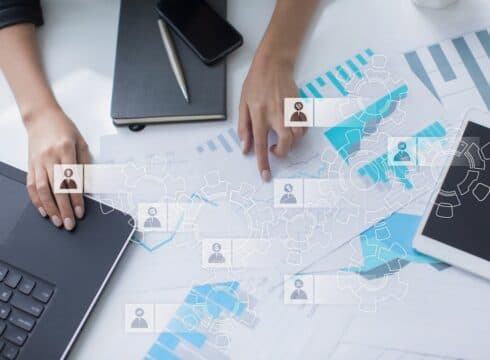As the remote workforce starts to make the shift back to the office, HR professionals must learn to adopt technology now more than ever
A 30-60-90-day roadmap for this ‘new normal’ is essential for a phased return
While Working from home (WFH) continues to be part of the new normal, many companies are pronouncing WFH to become a standard practice for 75% of their staff by 2025
Inc42 Daily Brief
Stay Ahead With Daily News & Analysis on India’s Tech & Startup Economy
As India comes out of lockdown and offices reopen, organisations are facing a unique set of tasks, including rethinking offerings and safety practices for staff returning to work. Though the government has permitted offices to host one-third of staff strength, companies are still wary about getting 33% of the workforce back. Here is where Human Resources (HR) steps in to create and lead seamless “back to work” employee experiences.
As the remote workforce starts to make the shift back to the office, HR professionals must learn to adopt technology now more than ever. From addressing daily processes, to timely communication with the employees, to coming up with new solutions to improve the overall employee experience – technology creates a massive opportunity for almost every human resource function.
In addition, a single technology platform offering applications, tools, and dashboards that provide real-time insights into metrics – including employee wellness, workforce availability, employee shift status, etc. – can be critical to a successful restart.
Is essential for businesses to reopen their workplaces quickly, and technology has a strategic way to help business owners and management make data-driven decisions that can help keep the entire ecosystem of employees, partners and customers safe during Covid-19 and beyond.
Here’s 3 tips on how HR can help organisations can leverage technology to get back to work.
30-60-90 Approach
A 30-60-90-day roadmap for this ‘new normal’ is essential for a phased return. Firstly, we need to identify how employees feel about returning to the workplace and that the priorities for the days ahead can be charted out accordingly. For example, precautions must be put in place to understand the criticality of which groups within the workforce need to return, how to ensure employee safety at the workspace, and what measures need to be considered for an emergency response if there is an outbreak within employee clusters.
As part of the next phase – the HR policies pertaining to employee health and safety must be relooked at in the first 30 days. During a crisis, communication is key to ensure employees adhere to all health protocols. Provided there are no Covid-19 related outbreaks in the next 60 days, the focus should gradually shift towards increasing workforce strength at the physical workplace – collaboration with operation heads across different units or offices is essential to chart the next phase of return and define priorities.
Once we approach the 90-day mark, it is crucial to gather critical feedback from stakeholders to gauge the approach and understand its implication on the entire workforce.
The 30-60-90-day plan should be focused around employee safety, crisis management, strategic shift allocation, business continuity planning, and skilling of talent. These strategic decisions must be data-driven, and should leverage technology early in the process to help streamline the process.
Leveraging Technology To Ensure Employee Safety
Given the present scenario, investing in essential back-to-work technologies which are effective and simple to implement could offer a range of tools designed to help businesses reopen the workplace quickly, while helping to keep employees, customers, partners and communities safe and informed.
HR leaders need to work closely with operational heads and IT functions to efficiently manage shifts and assess tactical and strategic decisions around the workforce. A command centre gives the leadership team a real-time, consolidated view of workforce demographics, employee wellness, employee location, location of facilities, hotspots and containments zones around workplace and workforce community, and emergency response preparedness.
Solutions such as Work.com enable organisations to manage the logistics of returning to work while putting the health and safety of employees and visitors first.
Build Resilience Into The Business Model
As most companies transitioned to remote work almost overnight, many employees were left with the need to skill up to succeed in an all-digital world. The continued and increasing interest in online learning since COVID-19, is an indication that businesses need to prioritize workforce development. According to new research by Salesforce, 77% respondents in India say workforce development should be a high priority for businesses, and 83% are more interested in online learning since Covid – which is 35% more than the global average.
While Working from home (WFH) continues to be part of the new normal, many companies are pronouncing WFH to become a standard practice for 75% of their staff by 2025. As organisations start to navigate this new normal, one needs to look at ways in which the HR can build resilience into the company’s business model.
For instance, assessing the skill sets and competencies of the staff to chart out a reskilling/upskilling initiative to create cross-functional expertise. This can help in proactively addressing issues such as crunched workforce resources due to the COVID-19 crisis. Trailhead, is a free online learning platform, designed to empower anyone, from any walk of life, to skill up for the jobs of the future. Transforming the employees into a super-charged, super-skilled workforce, can help in building resilience into the company.
There has never been a better time for businesses to capitalize on the benefits of technology — to not only reopen workplaces safely, but also help employees safely prepare for the future of work.
{{#name}}{{name}}{{/name}}{{^name}}-{{/name}}
{{#description}}{{description}}...{{/description}}{{^description}}-{{/description}}
Note: We at Inc42 take our ethics very seriously. More information about it can be found here.


